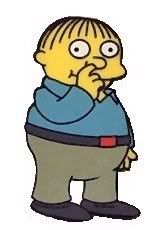This week was unusual for a couple of reasons. First, it featured new issues of Green Lantern and Legion of Super-Heroes after only two weeks, since both series are trying to get back to a regular monthly schedule. Second, I expected both Gotham Central and the Rann-Thanagar War Special to have endings, but instead both seemed beholden to larger corporate storytelling concerns. In the case of GC, take that as a spoiler.
Other than that, not a bad week. Batman and the Monster Men #4 (by Matt Wagner) and Detective Comics #816 (written by Shane McCarthy, art by Cliff Chiang) both featured good, straightforward, entertaining Batman stories. BMM relates Batman's narrow escape from the lair of Hugo Strange's monsters; and 'Tec finishes up the Mr. Zsasz two-parter with the cops chasing both hero and villain. Both explore the balance between mundane crime and super-crime, and both feature healthy doses of Bat-mystique.
Green Lantern #8 (written by Geoff Johns, drawn by Carlos Pacheco) finishes its latest two-parter with Mongul (and Mongal, his unfortunately-named sister), and since half of it is Pacheco-illustrated dream sequences, I had much the same reaction as I did with Pacheco's Superman/Batman arc: very pretty, and it gives him room to draw all kinds of outlandish situations, but ultimately it doesn't add up to much. I'm still trying to work out how Hal's fantasy would be so seductive to him. Either Johns doesn't quite get the Black Mercy, or he's just throwing in wild scenarios and teasing the explanations. Anyway, once GL and Green Arrow get back to reality, it's all fun and games until somebody's head comes off, and I'm wondering -- between this and Infinite Crisis, can I bring the "Four Beheadings And A Funeral" joke out of storage?
Legion #14 (written by Mark Waid, pencilled by Ken Lashley and Adam DeKraker) continues with the political and personal fallout from the Legion's victory over Terror Firma. Again, it's probably a cop-out, but I need to read this book from the beginning. There was a point when it all seemed familiar but radically new, and now it seems to have assumed that the reader is familiar with the radically-new aspects. It's not poorly done by any means, and I don't dislike the characters, but I get the feeling I've spent too little time with them.
Seven Soldiers: Bulleteer #3 (written by Grant Morrison, pencilled by Yanick Paquette) was a fun issue mostly for the inclusion of Mind-Grabber Kid, a one-off Denny O'Neil character from the late �60s post-Gardner Fox era of Justice League of America. Now MGK is an adult trying to trade on his moment of fame at a superhero convention. Yes, it's easy to mock comic conventions, but it's also fun, and Morrison does it with a knowing wink. There was a lot of cheesecake in this book at first, but now I can see where Morrison has been going with it.
Fantastic Four #534 (written by J. Michael Straczynski, drawn by Mike McKone) continues Ben and Johnny's fight with the Hulk, but throws into the mix the notion that the Hulk is acting out all of his most painful memories in a gamma-fueled haze. It feels a bit more like a Hulk story than an FF story, and it probably requires at least a passing knowledge of Hulk history to understand completely, but it works. Ben and Johnny are handled well too. A fun "Franklin Richards" story rounds out the issue.
Captain America #14 (written by Ed Brubaker, drawn by Steve Epting) concludes "The Winter Soldier" and, in fact, wraps up a dangling plotline from as far back as issue #1. Although it's a Cap/WS fight, it builds both on Cap's emotions for Bucky and WS's confusion about his own origins, so there's more dramatic heft to it.
It also provides an ending, which brings me to Gotham Central #40 (written by Greg Rucka, drawn by Kano and Stefano Gaudiano) and Rann-Thanagar War Special #1 (written by Dave Gibbons, drawn by Ivan Reis and Joe Prado). With RTWS I kind of understand, and arguably I have tacitly bought into the whole concept of this sort of "half-issue" (as in, this should have been Infinite Crisis #4.5) on the front end.
RTWS does three things: it allows everyone in space to point and gawk at the big hands coming out of the space-warp; it resolves the Rann-Thanagar war; and it sets up the new Ion series. Now, maybe when I see this in the larger Infinite Crisis context, I will understand the editorial meeting at which it was decided that these three things should happen in a special outside the main miniseries. Right now, though, this particular issue just feels very padded. It contains one extremely unfortunate (and I hope accidental) reference to the big "footprints" revelation in Identity Crisis, and the Ion setup also comes out of left field (and will probably be revisited even further in Ion #1). I was sorry to see the one person die, though, and that was handled decently.
In hindsight, though, this last arc of Gotham Central has been nothing but setup for future series -- specifically, Detective Allen as the new Spectre, and Detective Montoya working out unresolved issues about Allen�s murder. As setup it's okay, but I was expecting some closure and I don't feel like this last issue of the series was a fitting end for the arc, let alone the series itself. I had thought Gotham Central was insulated somewhat by larger editorial dictates, and it's disappointing to see so patently that in the end, it wasn't.
Full Post


